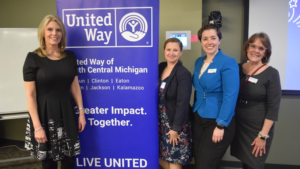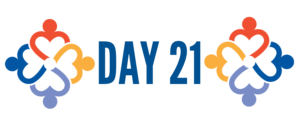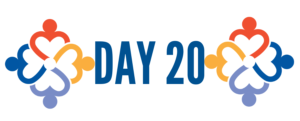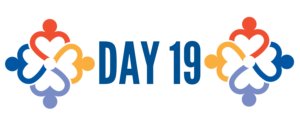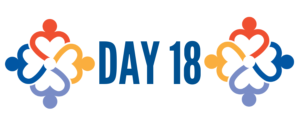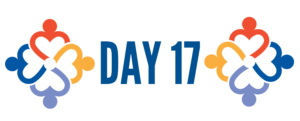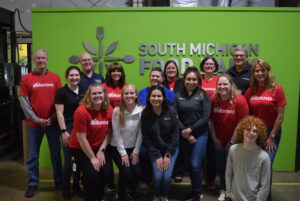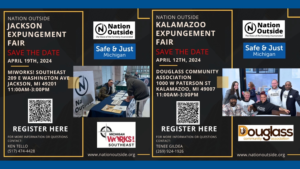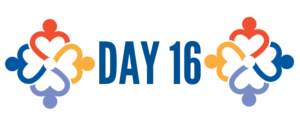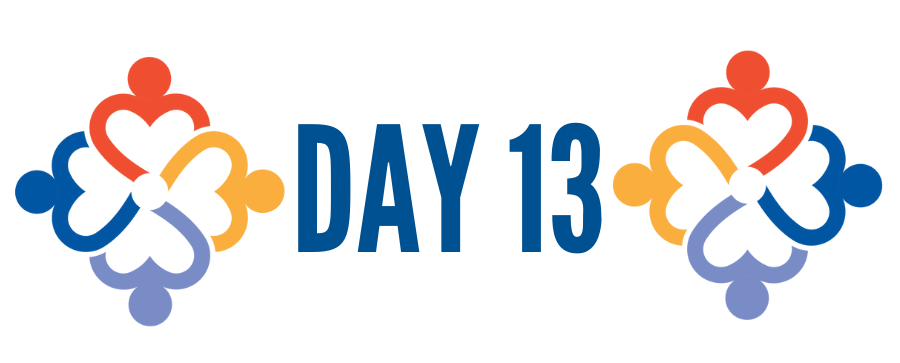
Day 13: Heterosexism and Cissexism
How do systems of oppression show up for lesbian, gay, bisexual, transgender, queer, intersex, asexual and other (LGBTQIA+) people? While all oppression seeks to dehumanize and exclude, this shows up in different ways for different identities. Here are some ways for us to understand how oppression impacts LGBTQIA+ communities.
Heterosexism describes a belief system that denies, excludes, denigrates, and stigmatizes any non-heterosexual or straight form of behavior, identity, relationship, or community (Herek, 1990) or otherwise favors straight or heterosexual relationships and people. Institutions, policies or practices that exclude or seek to exclude non-heterosexual people from marriage, adoption, foster care, health insurance, employment, or housing can be said to be heterosexist institutions, policies, or practices.
Cissexism describes a belief system that denies, excludes, denigrates, and stigmatizes transgender people (individuals whose gender identity is somehow different from their sex assigned at birth). This is often a belief that cisgender people’s (individuals whose gender identity matches their sex assigned at birth) gender identities and expressions are more natural and legitimate than those of trans people. Excluding transgender people from healthcare, public accommodations, bathrooms, employment, housing, sports, and more are cissexist institutions, policies, or practices.
Monosexism describes a belief system that denies, excludes, denigrates, and stigmatizes individuals who are attracted to more than one gender such as bisexual or pansexual people who maybe be attracted to men, women, non-binary people and/or people of any gender. More commonly, monosexism perpetuates the myth that people should only be attracted to one gender. This can show up as a denial of their experiences and invisibility. Bisexual and pansexual individuals experience a higher rate of physical/mental health, intimate partner violence, and substance abuse.
Allosexism describes an ideological system that denies, excludes, denigrates, and stigmatizes asexual individuals (people who do not experience emotional or sexual attraction). Allosexism shows up in systems that benefit or elevate partnered relationships above all others. This includes a lack of representation at almost all levels of public life, financial inequalities that benefit individuals in partnered relationships, and a belief that people who don’t experience attraction are somehow disordered and need to be fixed.
Four Levels of Oppression
These -isms operate at four levels of oppression. Commonly, we focus on personal or interpersonal conflict that is more commonly described as homophobia, transphobia, or biphobia. Exploring systems of oppression helps us to also understand that inequity operates at institutional and structural levels.
Personal or internalized heterosexism/cissexism/monosexism/allosexism: is the personal belief that LGBTQIA+ people are less deserving of respect, resources, and access. Among LGBTQIA+ people, this can show up as internalized oppression.
Interpersonal heterosexism/cissexism/monosexism/allosexism: is the expression of these -isms between individuals. It occurs when beliefs, biases, and prejudices affect interactions between or among people. This can show up in many ways including name-calling, verbal and physical harassment, and individual acts of discrimination or rejection.
Institutional heterosexism/cissexism/monosexism/allosexism: is the discriminatory treatment, unfair policies and practices, and inequitable opportunities and impacts within organizations and institutions based on LGBTQIA+ identities. This includes the many ways in which government, business, religious institutions, and other institutions and organizations create inequitable outcomes and impacts. This can be intentional or unintentional, but upholds dominance and unearned advantage for straight/heterosexual, cisgender, monosexual, or allosexual people.
Structural heterosexism/cissexism/monosexism/allosexism: refers to the systems in which public policies, institutional practices, and cultural understandings and norms work together to reinforce and further inequity. It’s how the sum total of these -isms show up across society.
Consider, how do you experience these –isms in your daily life? How often do you confront, interact with, or advocate for change in light of these experiences?
Today’s Challenge
Read:
Bisexuality and health: The cost of invisibility by Sabra L. Katz-Wise, Harvard Health Blog. [5 minute read] Bisexuality is often rejected as a stable, non-transitional sexual orientation by straight and queer communities. The impact of this invisibility includes real health detriments.
Forcibly displaced LGBT persons face major challenges in search of safe haven by United Nations Human Rights Office of the High Commissioner (May 16, 2022) [3 minute read] A group of UN and regional human rights experts urged governments to ensure that lesbian, gay, bisexual, trans and gender-diverse (LGBT) persons fleeing persecution are protected against violence and treated with dignity.
Watch:
Heterosexism, heteronormativity, and homophobia by Dr. Jama Shelton (January 15, 2015). [2 minute video] How does the belief that being straight and the systems that uphold show up in our communities? Explore these concepts and their impacts.
Protect LGBT Asylum Seekers like Carlos by Human Rights Watch (October 7, 2020). [3 minute video] What is it like to be forced to flee your country of origin to ensure your safety specifically because of your sexual orientation? Learn more about this experience and what we can do.
Engage:
Visit Harvard’s Project Implicit and take the Transgender IAT, Sexuality IAT, or another IAT topic of your choice. From the website, “The Implicit Association Test (IAT) measures attitudes and beliefs that people may be unwilling or unable to report. The IAT may be especially interesting if it shows that you have an implicit attitude that you did not know about.” Reflect on your IAT results. Were you surprised? What norms, myths, or stereotypes have you learned that might impact your implicit associations of that group? During your week, try to notice assumptions or reactions you have about that group.
Discussion:
- How often do you think about your own sexual orientation, gender identity or how you express your gender? What might it be like if you were constantly having to assess in every new space if it’s a safe space to tell a short story about your partner, childhood, kids, etc?
- How can you cultivate spaces of openness where others do not have to correct your assumptions about their gender, their pronouns, or their sexual orientation?

